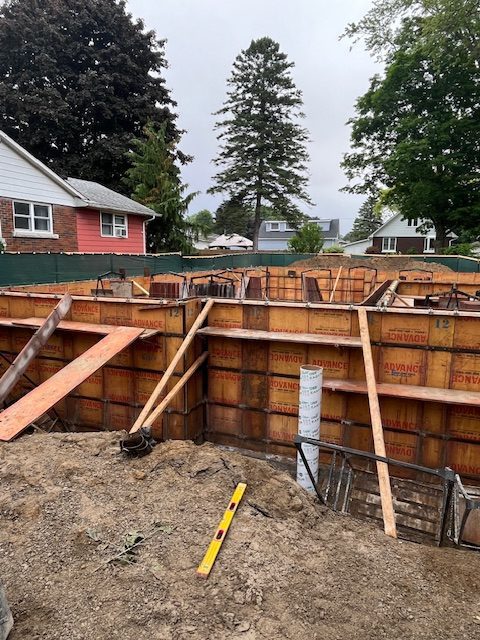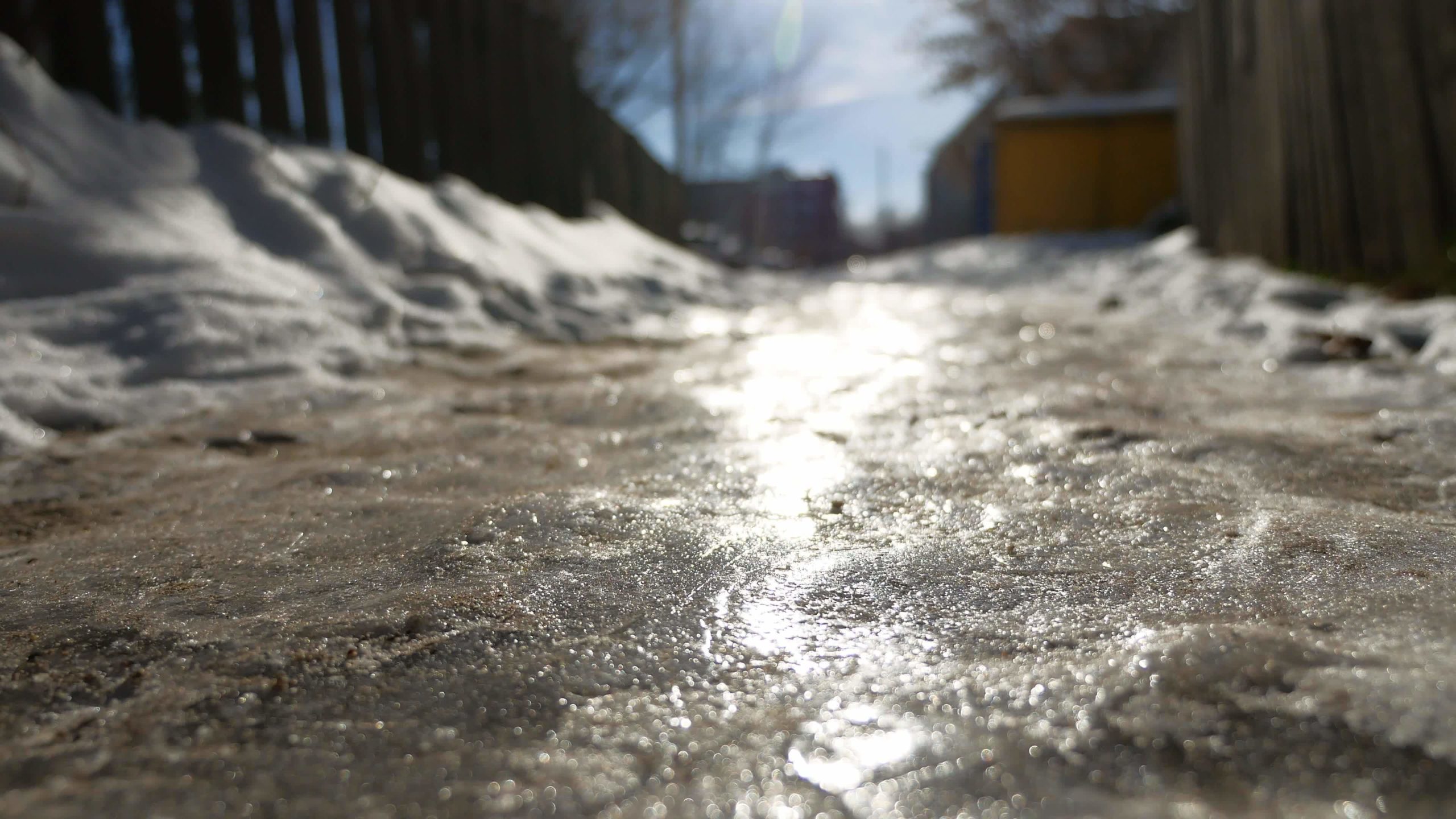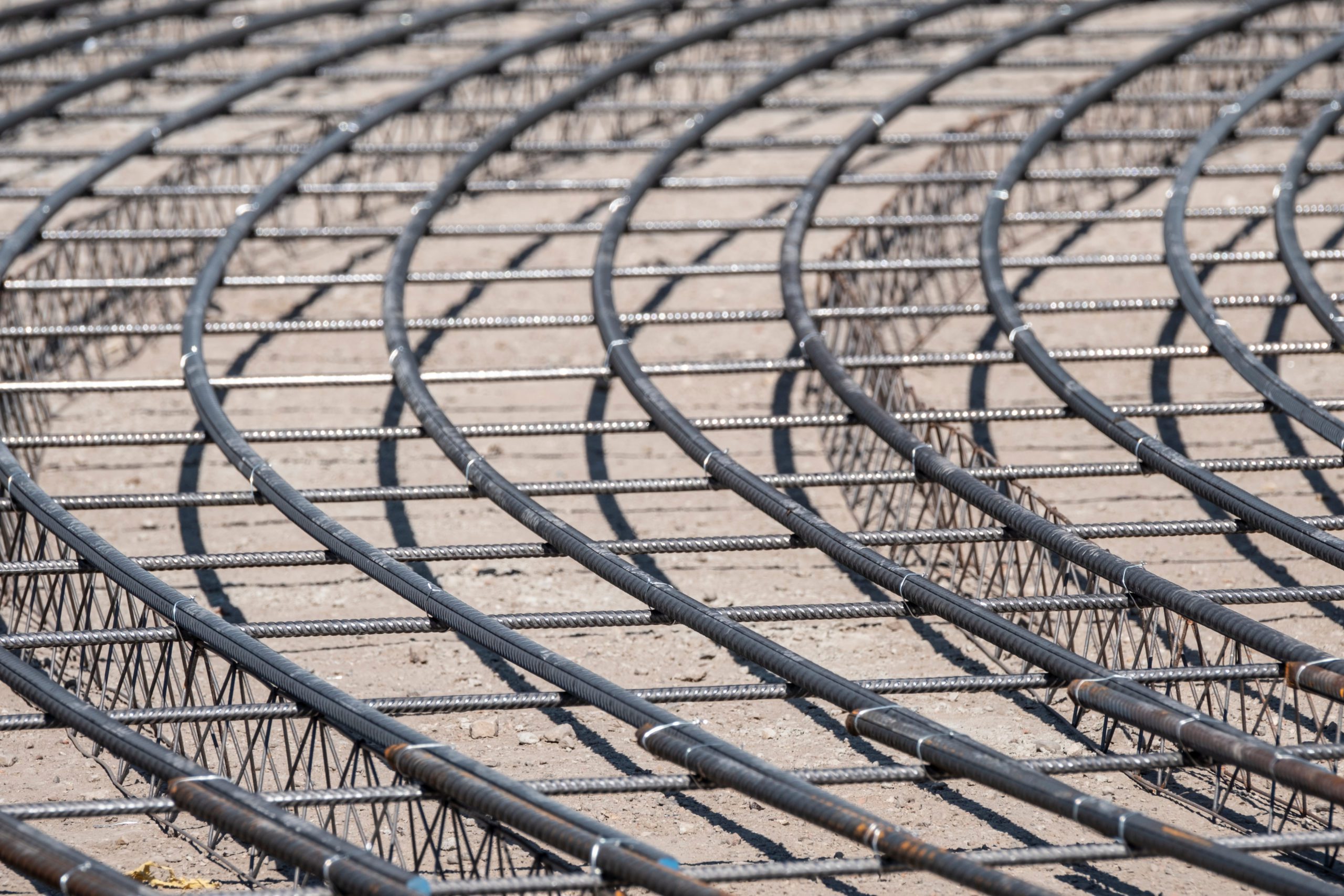The world of concrete forming has many details and intricacies. Concrete forming is necessary for almost any kind of large-scale construction. There is a lot to concrete forming and to be consistently successful with forming, you need as much expertise as you can get. Luckily, here at Form & Build, concrete forming is what we do best. Stacked with a team full of experts, we’re glad to be able to share our expertise. What’s the point of having this knowledge if we aren’t going to share it right? Today we’re going to discuss the ins-and-outs of everything related to concrete forming. From helpful and important advice to the specific details of accessories, we’re here to help educate.
Concrete forming involves creating molds or frameworks into which concrete is poured and allowed to harden, taking on the shape of the mold. This process is crucial in construction for shaping concrete into desired structures such as walls, columns, beams, and slabs. Formwork can be made of various materials like wood, steel, aluminum, or plastic, depending on the project requirements. It requires careful planning, precise measurements, and skilled labor to ensure the resulting concrete structures are strong, durable, and meet design specifications. Proper formwork is essential for achieving desired aesthetics, structural integrity, and overall project success. With the proper materials, accessories, and knowledge, one can complete vast diversity of projects.

Forming Systems
A concrete forming system is a set of components and techniques used to create molds or frameworks for pouring and shaping concrete during construction. These systems typically include formwork materials such as wood, steel, aluminum, or plastic, along with supporting hardware like braces, ties, and connectors. The system is designed to be adjustable and reusable, allowing for efficient construction. There are a wide variety of concrete forming systems you can use. We are proud to be carriers of Advance forming systems. Concrete forming systems come in a diverse selection of sizes and measurements, ensuring that the systems can work for any kind of construction job.
The standard for 1-1/8” Advance forming systems are the 8FT 4Bar system and the 8FT 6Bar system. The 8FT 4Bar system is the most economical of the 1-1/8” systems using the fewest ties and being the lightest. However, less ties and bars result in more deflection in the form. Deflection is when the form expands outwards under the pressure of the concrete. Due to the last bar being 20″ from the top it tends to spread wider than the desired wall width. Pouring higher walls can be a little more difficult with this system. The tie capacity is 3000lbs and tested to a safety factor of 1.5 (4500lbs). The location of the bars is measured from the base/bottom of the form to the center of the bar. Some manufacturers measure to the bottom of the bar. Some to the top. Advance uses the centre of the 2” bars. Pictured below is the diagram for the varying options with the 8FT 4Bar system.

The 8FT 6Bar system’s consistent spacing allows the forms to be cut down and used as smaller sizes i.e. the 8ft 6bar can be made into a 5ft 4in 4bar. There is less deflection due to more ties and closer spacing and has a faster rate of pour. The staggered stacking makes higher pours possible. However, with more ties, there is an increased cost on regular foundations. The forms are also heavier with this system as opposed to the previously discussed system. Just like with the 8FT 4Bar, the tie capacity is 3000lbs and tested to a safety factor of 1.5 (4500lbs) and uses the centre of the 2” bars for measures. Pictured below is the diagram for the varying options with the 8FT 6Bar system.

Corners
Corners play a vital role in providing structural integrity, alignment, support, and reinforcement for concrete forming systems. They help maintain the shape and stability of formwork, ensure accurate alignment of formwork panels, act as anchor points for bracing, and contribute to the overall strength of the system. Corners are essential components that help achieve precise and reliable concrete structures during construction projects. Each system has matching corners, the most common being:
- 1×1 Outside – the standard outside corner for the Advance system. The corner security locks the outside abutting panels in place at a 90-degree angle.
- 2 Inch Offset – used on a continuous wall when the wall thickness changes by 2″.
- 2×2 Outside – This corner adds 2″ in each direction enabling you to switch from an 8″ to a 10″ wall and utilize existing fillers.
- 4×4 Hinged Inside – used for a variety of varying degree angles for the inside of the wall.
- 4×4 Fixed – 135 Degree – This fixed inside corner locks the inside panels in place to achieve a 135-degree angle for bay windows regardless of the thickness of the wall.
- 4×4 Inside – the standard inside corner for the Advance Concrete forming system. The corner locks the inside abutting panels in place at 90-degree angle.
- 4×6 Inside – is used when the ongoing wall thickness changes 2″ at T wall.
Ties
Ties are essential components of concrete forming systems, securing formwork panels together during concrete pouring and curing. They ensure proper alignment, support, and stability of the formwork, contributing to the structural integrity and quality of the resulting concrete structure. Ties come in various designs and are selected based on the specific requirements of the project. Properly installed ties help prevent formwork failure and ensure safety on construction sites. Here are the various ties and their uses:
- Resi Tie – Commonly used in residential construction projects where simplicity, ease of installation, cost-effectiveness, and minimal surface damage are prioritized. Come in straight and bent. Bent ties feature a v-notch on the inner breakback for ultra-reliable breakoff with a single hammer blow (only used in 1-1/8” system)
- Resi Coil Tie – With a resi-tie electronically welded to a 1/2″ coil tie end, this tie gives the user the versatility of threaded coil rod for one-sided forming, long ties, and other purposes, while still using the quickest, handset modular form system (only used in 1-1/8” system)
- Offset Resi Tie – Are precisely bent resi-ties meant to strengthen offset sections of foundation walls where it is not possible to use a straight tie (only used in 1-1/8” system)
- Aluma Coil Tie – This unique tie is a standard aluminum form flat tie on one end and a 1/2″ coil rod adapter on the other end. You can connect your aluminum forms to industry-standard 1/2″ coil rod to deal with difficult forming situations, such as one-sided forming or field-adjustable length ties
- Aluminum Form Tie – Offer a lightweight, corrosion-resistant, and reusable solution for securing formwork panels
- Cam Lock Loop Coil Tie – With a loop tie end and self centering cone, electronically welded to a two-strut, 1/2” coil tie end, this tie allows the user to take advantage of the versatility of threaded coil rod for one-sided forming, long ties, and other purposes when using Gates Cam-Lock forms and hardware
- Combo Tie – Used to transition between Steel Ply and Job-built forming. One side is offered as a loop tie and the opposing end is a button head snap tie
- Custom Snap Tie – Used in situations where standard form ties may not be suitable due to specific project requirements. Typically designed and manufactured to meet unique specifications and dimensions, tailored to the needs of a particular project
- Deep Breakback Tie – With an 1-1/2” breakback and optional waterstop, it makes it possible to pour commercial-specification concrete walls with 1-1/8” form panels. The precisely crimped ends of this round wire tie fit the swing latches of standard 1-1/8” forms in the same way as standard flattened wire ties
- Fiberglass Tie – Never rusts, resists water seepage, and it eliminates the need for breakback requirements and patching
- Loop Coil Tie – The unique design allows you to make a convenient connection between Steel Ply style formwork and 1/2” coil rod for one-sided forming, adjustable-length ties, blind-side forming, etc.
- Loop Tie – Secure two parallel formwork panels together. They consist of a continuous loop made of wire or steel rod, with each end of the loop inserted into the formwork on opposite sides of the panels. Carry a safe working load of 3000 lbs with optional cones and waterseal
- One-Piece Hook Tie – Provide a fast way to connect your formwork to the rebar studs on blind side walls
- Snap Coil Tie – A multipurpose transition tie for “job-built” plywood concrete forms. With a button head snap tie electronically welded to a 1/2” coil tie end, this tie gives the user the versatility using of threaded coil rod for one-sided forming, long ties, and other purposes, while still using familiar, low-labor-cost means of attachment to formwork (slotted wedges, Jahn brackets)
- Stud Tie – Clip on to existing weld studs for connection to 1/2” coil rod. Provide a quick, secure way to attach formwork to existing 3/4” headed weld studs (shear connectors) with 1/2” coil rod. Special coil loop and retainer clip combine to make secure in-line connection of 1/2” coil rod to weld stud
- Turnbuckle Loop Coil Tie – A way to adjust the length of a tie after it is in place and attached to the formwork. Like the industry-standard LC Loop-Coil Ties, these ties provide a convenient connection between Steel Ply formwork and 1/2” coil rod, for one-sided forming, adjustable-length ties, blind-side forming, etc.
Clips
Clips play a crucial role in concrete forming systems by providing secure connections between formwork panels, ensuring the integrity and quality of the resulting concrete structures. Here are the varying clips and their uses:
- 90° Corner Clips – Provide a quick, low-cost alternative to full height outside corners. The standard 90° corner clip replaces outside 1×1 corners. Corner clips are less expensive, more durable, and more universal than fixed corners.
- Angle Corner Clips – Again, provide a quick, low-cost alternative to full height outside corners. The standard 90° corner clip replaces outside 1×1 corners and angled clips replace expensive outside angle corners. Corner clips are less expensive, more durable, and more universal than fixed corners. Come in 22.5 degrees, 30 degrees, and 45 degrees
- Curved Wall Clips – Are a quick way to connect standard 1-1/8” filler panels together to form curved walls. By adjusting the widths of inner and outer filler panels (to keep opposing panel joints roughly aligned) curved walls of any radius, down to approximately 3ft, are possible
- SideBar Extension Clips – Allows you to easily add extra heights or secure job-built fillers to modular steel frame forms. Available in two sizes for 1-1/2” lumber and 3/4” plywood. The clip holds itself in place when lumber is installed, or for additional security a wedge bolt can be installed
- Small Clips – Used in forming situations where a full panel latch is unavailable. This may occur where there are step-up in a wall, or when using narrow fillers that don’t have a latch
- Stacking Clips – Thin, strong, steel clips for joining 1-1/8” plywood panels to other 1-1/8” stock or to 1-1/2” lumber. Gives you a quick, inexpensive way to pour a slightly higher wall with your existing form panels
Accessories
Now there are plenty of accessories as well in the wide world of concrete forming that have yet to be discussed. Some jobs require some to many of them while others might require none. It’s all dependant on the construction project. Here are some additional accessories and their uses:
- Aluminum Foam Clamps – Make it easy to form brickledge and other blockouts on foundation walls when using aluminum form panels. The adjustable clamp attaches to the top of the form panel with a standard form pin and wedge and holds consumable foam panels tight against the inside form face without fasteners
- AnchorBar – Use the fastener or mechanical anchor of your choice (up to 5/8” diameter) to connect formwork to existing structures, whether wood, concrete, or steel. Or, weld the body of the AnchorBar to steel structures for an inexpensive weld-on tie point with swivel coil loop
- Cages – Are designed to hold up to twenty-two 1-1/8” form panels. A unique, solid steel, forged lifting bar allows for convenient placement of forms at job sites using a boom truck, crane, or other lifting equipment
- Coil-Lag – Designed to provide a temporary means of attaching formwork to wood structures. Typical application is one-sided forming against soldier piles with wood lagging
- Coil Loop – Designed as a universal means of attaching to rebar and steel studs. The loop features a bulb shape which is large enough to accept up to a #9 rebar, or easily slip over a the head of a Nelson Stud
- Coil Rod – A threaded rod that is cut to length and then rolled which means it’s free of burrs and threads easily
- Coil-Stud – Fast, low-cost method of attaching formwork to steel structures. Provide low-cost attachment points for coil hardware-based form ties onto steel structures. Typical application: one-sided forming against soldier piles or sheet piling
- Foam Nails – Make it easy to form brickledge and other blockouts on foundation walls when using Steel Ply, 1-1/8”, or other plywood faced forming systems. Simply attach the desired foam block to the face of the panel with two nails per panel
- Hold Down Bracket – Used for securing 1-1/8” form panels to footings or underlying slabs against uplift on battered walls or similar applications. Attaches to waler bolt on lowest panel bar (for panels with bars 8” above bottom)
- Rebar Coil Clamp – A heavy duty version of the popular Rebar Hook. This clamp will allow you to tie onto rebar up to size #11. Available in multiple threadforms for virtually any form system
- Rebar Hook – A low-cost, fast means of connecting threaded rod at right angles anywhere along the length of rebar for a variety of purposes. The unique arrangement of two opposing hooks makes it easy to make a field connection to rebar with limited clearance
- Scaffold Bracket – Have keyhole slots to attach to the hex head shoulder bolts of panels or compatible 1-1/8” form panels. Each scaffold bracket attaches to two bolts to safely carry the load. Heavy duty, welded 1/4” steel and angle iron construction. Keyhole slots provide a strong and secure means of attachment to form panel shoulder bolts
- Stacking Plate – Are used to secure a tie at the joints between panels on the 1-1/8” plywood forming systems. Commonly used when stacking 4- or 5-bar panels between the successive courses
- Strongback Clamps – Securely fasten strongbacks to formwork panels, enhance structural support, prevent bowing or buckling, and improve formwork strength
- Waler Brackets – Provide support and attachment points for walers, enhancing stability, ensuring uniform pressure distribution
- Waler Clamps – Used to secure walers horizontally to the formwork panels. Sets securely with a quick blow to the wedge, and strips just as easily
There are a lot of components in a concrete forming system. You need a high level of expertise to effectively complete concrete forming jobs. The knowledge gained today on types of systems, corners, ties, clips and many more accessories should give you an excellent foundation for your concrete forming knowledge. Form & Build is your go to spot for any and all concrete forming needs. From full on systems to small ties, we have it all. With a full team of experts we are always ready and eager to help with all concrete forming needs. You can check out our full display of products here on our website now, or feel free to call any of our six branches to speak with a representative yourself.

